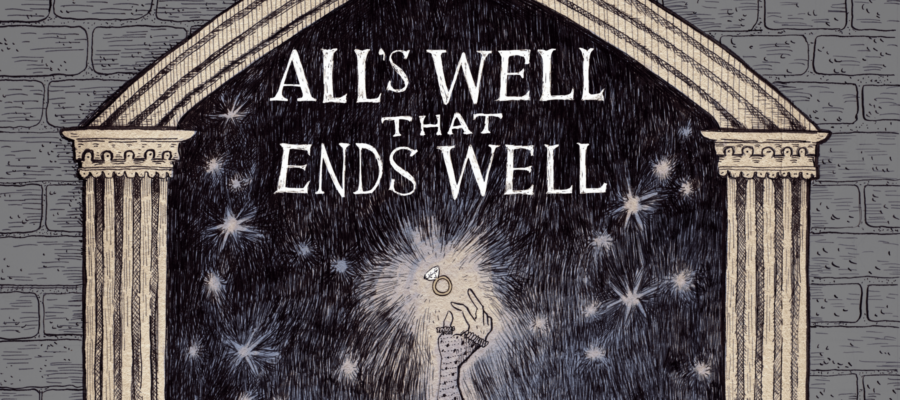Pareeshe Fatima
John Keats is widely regarded as one of the greatest Romantic poets, who expressed his feelings and thoughts through his poetry with remarkable skill and beauty. His poems often deal with themes of love, nature, romance, passion, and deep insight, reflecting his own personal experiences and emotions. In this article, I will critically evaluate some of his most famous poems in relation to these themes and show how they demonstrate his poetic genius and legacy.
One of the most prominent themes in Keats’ poetry is love, which he explored in various forms and aspects. He wrote about his love for his family, friends, muses, and idealized women. He also wrote about the joys and sorrows of love, the obstacles and challenges of love, and the transcendence and immortality of love. A few of his poems befittingly explain his theme of love.
“To My Brothers” is a sonnet that Keats wrote to his younger brothers George and Tom in 1816, expressing his affection and gratitude for them. He praises their virtues and talents and hopes they achieve their dreams and happiness. He also acknowledges their shared bond of poetry and vows to cherish their memories in his heart.
“Bright Star” is a sonnet that Keats wrote to his beloved Fanny Brawne in 1819, expressing his desire to be with her forever. He compares himself to a bright star who is steadfast and unchanging but also wishes to be more like a human lover who can feel and touch. He imagines being close to her breast, listening to her breath, and gazing at her face. He ends the poem with a paradox: he wants to live forever with her or die in that moment of bliss.
“La Belle Dame sans Merci” is a ballad that Keats wrote in 1819, telling the story of a knight who falls in love with a beautiful but cruel fairy lady. She seduces him with her charms and takes him to her cave, where she feeds him sweet fruits and sings him to sleep. He dreams of pale kings and princes who warn him that her spell enslaves him. He wakes up alone on a cold hillside, where he laments his fate.
Another central theme in Keats’ poetry is nature, which he admired and celebrated for its beauty, diversity, and mystery. The classical myths and legends influenced him, depicting nature as a living force with gods and goddesses, nymphs and fauns, heroes and monsters. He also observed nature with a keen eye and scientific curiosity, accurately and imaginatively describing its details and phenomena. A few of his poems reflect his love for nature.
“To Autumn”: This is an ode that Keats wrote in 1819, praising the season of autumn for its richness and abundance. He personifies autumn as a friendly matron who works with the sun to ripen the fruits and crops, watches the flowers and animals, and sings with the reapers and gleaners. He also contrasts autumn with spring, showing how they are both beautiful in different ways. He ends the poem with a question: where are the songs of spring? He answers: they are unnecessary now because autumn has its music.
“Ode to a Nightingale”: This is an ode that Keats wrote in 1819, inspired by the song of a nightingale that he heard in a garden. He admires the bird’s melodious voice, transcending time, space, sorrow, and pain. He wishes to escape from the world’s troubles, either by drinking wine or using his imagination. He follows the nightingale into a dark forest, where he feels joy and sadness. He wonders if he is awake or dreaming, alive or dead. He realizes that the bird’s song is immortal while he is mortal. He ends the poem with a question: was it a vision or a waking dream? He answers he does not know because the bird has flown away.
“On First Looking into Chapman’s Homer”: This is a sonnet that Keats wrote in 1816 after reading a translation of Homer’s epic poems by George Chapman. He compares his experience to an explorer who discovers new lands and oceans or an astronomer who discovers new planets and stars. He expresses his awe and wonder at the grandeur and majesty of Homer’s poetry, which he had not appreciated before. He ends the poem with a metaphor: he feels like an eagle soaring high above the clouds or like Cortez gazing at the Pacific Ocean for the first time.
Please, subscribe to the website of the republicpolicy.com
A third theme that pervades Keats’ poetry is romance, which he associates with beauty, imagination, creativity, and sensuality. He was fascinated by the romantic ideals of chivalry, adventure, heroism, and courtly love, which he found in medieval legends and Renaissance literature. He also experimented with the romantic forms of sonnet, ode, ballad, and epic, which he adapted and modified to suit his style and vision. A few of the poems genuinely reflect his passion for romanticism.
“The Eve of St. Agnes”: This is a narrative poem that Keats wrote in 1819, based on a medieval superstition that a young maiden can see her future husband in her dreams on the eve of St. Agnes’ day. He tells the story of Madeline and Porphyro, two lovers who belong to rival families. Porphyro sneaks into Madeline’s chamber, watching her sleep and preparing a feast for her. He wakes her up with his music and convinces her to elope. They escape from the castle while a storm rages outside.
“Ode on a Grecian Urn”: This is an ode that Keats wrote in 1819, inspired by a painted vase he saw in a museum. He addresses the urn as a silent and eternal witness of the past, which preserves the scenes and stories of ancient Greece. He examines the images on the urn, which depict a sacrifice, a procession, a chase, a musical performance, and a lovers’ embrace. He marvels at the beauty and mystery of the urn, which seems to capture the essence of life and art. He ends the poem with a paradox: the urn says that beauty is truth, and truth is beauty.
“Endymion”: This is an epic poem that Keats wrote in 1818, based on a Greek myth about a young shepherd who falls in love with the moon goddess Selene. He recounts the adventures and trials of Endymion, who searches for his beloved across the earth, the sea, and the underworld. He encounters various characters and creatures, such as nymphs, satyrs, gods, monsters, and spirits. He finally reunites with Selene, who grants him immortality and happiness.
A fourth theme that runs through Keats’ poetry is passion, which he expresses with intensity and fervour. He wrote about his passion for poetry, for beauty, for life, and for love. He also wrote about the passion that consumes and torments him, that drives him to madness and despair. He explored the paradoxes and contradictions of passion, such as pleasure and pain, joy and sorrow, life and death. Some examples of his passionate poems are:
“When I Have Fears That I May Cease to Be”: This is a sonnet that Keats wrote in 1818, reflecting on his fears of dying young before achieving his poetic ambitions. He imagines that he will never be able to write all the poems that he has in his mind or to enjoy all the beauty that he sees in nature and art. He also laments that he will never be able to love or be loved by his beloved. He ends the poem with a resignation: he stands alone on the shore of the world, looking at the stars with nothingness beside him.
“Ode on Melancholy”: This is an ode that Keats wrote in 1819, advising how to cope with sadness and depression. He rejects the idea of using drugs or suicide to escape from melancholy, as they would also destroy joy and beauty. Instead, He suggests embracing melancholy as a natural and inevitable part of life and finding solace in the most beautiful and painful things. He lists some examples of such things, such as flowers, fruits, clouds, rainbows, music, poetry, love, and death. He ends the poem with an affirmation: melancholy is not an enemy but a friend who dwells in the temple of delight.
Lastly, John Keats is a sublime poet of nature, love, romance and passion. He died at a young age. However, he is always remembered for his romantic and passionate poetry.
















